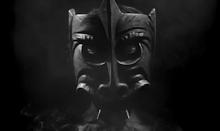
I never saw Wrong Turn, despite it’s minor cult following and Stan Winston effects. It always just kind of seemed like a minor movie made at the tail end of the second slasher boom.
But I’ve heard the good things about Wrong Turn 2, and fearing that I would miss the deep threads of narrative and thematic material the two would certainly share I decided to watch Part one first.
It turns out it is a minor movie made at the tail end of the second slasher boom! Though albeit one with some cool special effects by Winston, and blessedly free of CGI gore.
The problem with Wrong Turn is it’s just kind of there. It’s never bad, but at the same time it’s not particularly good. It’s not really that tense (aside from it’s admittedly ingenious opening scene), that funny, or that gorey. It’s just a programmer, without even that sense of craftsmanship you can get out of a really good programmer to recommend it. It’s basically a duller less creative version of Aja’s The Hills Have Eyes remake.
The only thing that makes it stand out is its vaguely hilarious gender politics. Wrong Turn definitely wants to have its “Eliza Dushku is a strong female protagonist” Cake and eat its “Now watch her get tied to this bed and get molested by Drooling hillbillies” too. Mostly she just kind of seemed bored. Giving the kind of performance that serves as a reminder of why her performance in Dollhouse was such an effective shock.
Wrong Turn follows a young medical intern, who unwisely takes a detour and ends up stranded with a group of campers. Soon the unlucky trio come across a pack of deformed hillbillies who bake them a cake try to kill and eat them. Much running and screaming ensues. As well as an unexpected slasher version of the tree fight in Crouching Tiger Hidden Dragon.
Things progress at a pretty good clip, and the not final girl proves herself to be annoying. No seriously annoying. Like she deserves to be mentioned alongside the likes of Shelley and Franklin bad.
There are a few clever gore shots (I did mention Stan Winston produced this right?) and in all fairness I can understand why this movie has wormed its way into the heart of more then one horror fan. It’s old school, but in a very specific way. It doesn’t feel like a conscience throwback to the slasher genre like The Screams and Urban Legends of the world did. It just feels as if the genre never ended.
But call it over saturation, call it being a cranky old man. But this time I just couldn’t get myself that excited for more of the same.















































































































